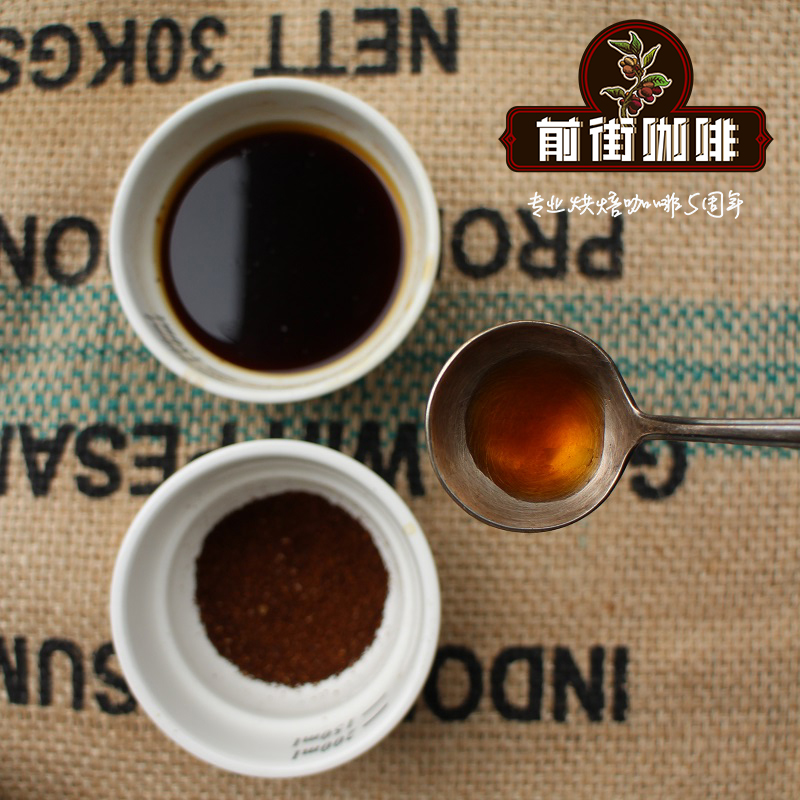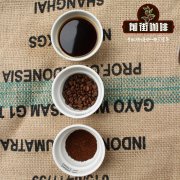Explore: Brazil St. John Coffee Manor flavor taste what kind of coffee in Brazil is more famous

Professional coffee knowledge exchange more coffee bean information please follow the coffee workshop (Wechat official account cafe_style)
Coffee was first introduced to Brazil in the early 18th century. In 1727, the Brazilian government sent a personable army officer to secretly bring coffee seeds back to Brazil from French Gaiana under the pretext of mediating border disputes. It is said that the governor's wife of French Gayana was so fascinated by the officer that she secretly brought coffee tree seeds to him at a farewell dinner party. At present, 2 million hectares of land in Brazil is used to grow coffee, the largest is Arabica, and the beans will eventually be sent to large bakers in various countries, also known as Santos (in the name of the export port of Santos, not the producing area). Brazil has also proved to be able to produce gourmet coffee and small quantities of coffee, and the local boutique coffee can not only be provided by small-scale coffee farmers. The main coffee producing areas in Brazil are Sul de Minas South Minas, Matas de Minas Minas South East Mountain Forest, Cerrado Hirado, the north-central mausoleum of Chapadas de Minas Minas, Mogiana, Paran á Parana and Bahia Bachia. There are both traditional varieties and variants, such as Bourbon, Mondo Novo Mondonovo, Icat ú Ikatu, Kaduai, Iapar, cultivated card Taiyi.
Brazil is the largest coffee producer in the world, accounting for about 30% of coffee production, but because Brazil is located in tropical rain forest areas with relatively flat terrain and few high-altitude mountain forests, most coffee is grown in low-altitude non-volcanic soil areas. And there is not much shade for shading, resulting in the disadvantage that Brazilian beans grow quickly, but the density and soft flavor of coffee does not change much. Coupled with large-scale machine harvesting of coffee beans with a wide range of maturity differences in coffee harvesting at the same time, so that the quality of Brazilian beans is not particularly outstanding has always stayed in the category of commercial beans.
Brazil is the largest coffee producer in the world, providing nearly 45% of the world's coffee raw beans.
The main producing areas are Minas Gerais Minas Gerais, S ã o Paulo Sao Paulo, etc. Sirado Cerrado and South Minas Sul de Minas in Minas Gerais are the main producing areas of boutique Brazilian coffee beans because of their high altitude.
In Brazil, which is skilled in post-processing technology, there are water washing, half-sun and sun treatment, but the most common is the sun treatment. Brazilian coffee is characterized by sweetness, fullness and roundness, clean and supple flavor, low acidity, and is widely loved by the general public.
Country: Brazil
Producing areas: Minas Gerais Minas Gerais, New Resende Nova Rezende
Manor: St. John's Manor Fazenda Sao Joao
Treatment: insolation
Variety: Bourbon
Altitude: 1120-1230m
Moisture / density: 10 centigrade 888
Cup test flavor: cream, hazelnut, molasses, almonds, citrus, mellow
Important Notice :
前街咖啡 FrontStreet Coffee has moved to new addredd:
FrontStreet Coffee Address: 315,Donghua East Road,GuangZhou
Tel:020 38364473
- Prev

Brazilian Coffee Manor Funas Manor Coffee Flavor introduces the history of coffee in Brazil
Coffee workshops (official Wechat account cafe_style) Today, Brazil is the largest exporter of coffee on the world market, accounting for about 1/3 of the world's total. Brazil has 26 states and 17 states produce coffee, but seven of them produce the most, accounting for 98% of the country's total output. , of which: Parana,
- Next

Brazil Coffee Flavors Explore Brazil-Auria Coffee Estate Variety Taste
Professional coffee knowledge exchange More coffee bean information Please pay attention to coffee workshop (Weixin Official Accounts cafe_style) Brazil is the world's largest coffee producer accounting for about 30% of coffee production, but because Brazil is located in tropical rain forest area, the terrain is relatively flat and there are few high-altitude forests. Most coffee is planted in low-altitude non-volcanic soil areas, and there is not much shade as shade.
Related
- Does Rose Summer choose Blue, Green or Red? Detailed explanation of Rose Summer Coffee plots and Classification in Panamanian Jade Manor
- What is the difference between the origin, producing area, processing plant, cooperative and manor of coffee beans?
- How fine does the espresso powder fit? how to grind the espresso?
- Sca coffee roasting degree color card coffee roasting degree 8 roasting color values what do you mean?
- The practice of lattes: how to make lattes at home
- Introduction to Indonesian Fine Coffee beans-- Java Coffee producing area of Indonesian Arabica Coffee
- How much will the flavor of light and medium roasted rose summer be expressed? What baking level is rose summer suitable for?
- Introduction to the characteristics of washing, sun-drying or wet-planing coffee commonly used in Mantenin, Indonesia
- Price characteristics of Arabica Coffee Bean Starbucks introduction to Manning Coffee Bean Taste producing area Variety Manor
- What is the authentic Yega flavor? What are the flavor characteristics of the really excellent Yejasuffi coffee beans?

